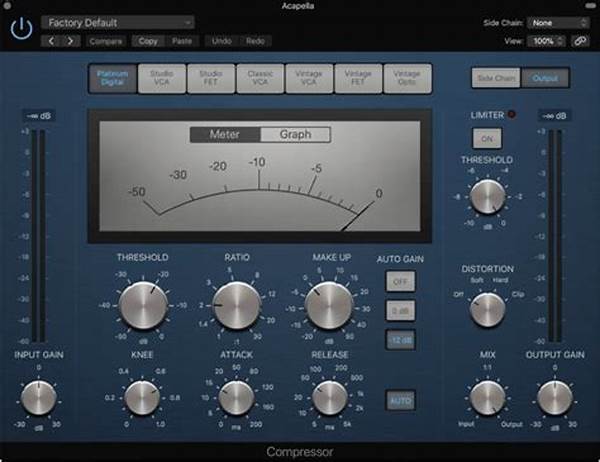When diving into the world of audio production, one must appreciate the intricate artistry involved in shaping sound to evoke emotions, convey messages, and transform simple raw audio into a harmonious masterpiece. Dynamic audio production methods have become the cornerstone of modern audio engineering, providing the tools to manipulate sound meticulously. These methods encompass a variety of processes and techniques designed to enhance and deliver sound in a way that captivates and engages listeners. Whether in music, podcasts, or film soundtracks, dynamic audio production offers endless possibilities for creativity.
Read Now : Antique Love Song Archives
The Evolution of Audio Techniques
Once upon a time, audio production was all about getting the right chords and vocals. But hey, we’re in the future now, and dynamic audio production methods have shaken things up like never before. From tweaking frequencies to mixing tracks with jaw-dropping precision, these techniques have gone from old-school vibes to cutting-edge wizardry.
Dynamic audio production methods are like the secret sauce to every banging track out there. Got a bass that’s barely thumping in the background? With the right dynamic techniques, it’ll be slapping harder than your grandma’s pancake recipe. Simply put, these methods morph sounds into experiences. You’ve got compressors, limiters, and all those fancy toys that pros use to turn soundwaves into magic. And let’s not forget automation that makes your mix dance at every beat.
And don’t even get me started on sidechains and ducking; they’re the mischievous duo that adds rhythm and groove to your music. Imagine a track without any dynamic techniques: It’d be like bread without butter; just plain and sad. So, next time you have a jam session, remember to sprinkle a little magic with dynamic audio production methods and watch your audience groove out of their minds.
Techniques That Made a Mark
1. Compression Magic: When audio’s buzzing all over, dynamic audio production methods like compression tame it, keeping it smooth.
2. Equalizer Groove: EQ is the stylist here, balancing tones so your sound isn’t just noise.
3. Reverb Waves: Add a little space and depth. Reverb can take your tune from bedroom pop to an arena vibe.
4. Sidechain Shuffles: Overlapping sounds got your mix muddled? Sidechain’s got the sync to make it pop.
5. Automation Moves: Dynamic audio production methods mean adjusting volumes and effects live, making the sounds breathe.
Unleashing Creativity with Dynamic Audio Techniques
In the ever-evolving landscape of audio production, keeping up with trends and techniques ensures you remain at the forefront of innovation. Dynamic audio production methods aren’t just another fad—they’re the heartbeat of modern audio creation. By infusing life into every note, they bring out the raw essence of music and sound design. These techniques wield the power to transform hollow digital signals into expressive narratives.
Understanding how each component fits into the bigger picture is crucial. Tackling elements like loudness, frequencies, and reverb calls for an understanding of how they collectively impact the listener’s experience. Dynamic audio methods allow engineers and producers a canvas to paint vivid soundscapes. Imagine a sound check where dynamic audio production methods sculpt each note until the entire mix feels tailored. From creating ambient soundscapes to punchy beats, these tools lay the foundation for crafting unforgettable audio experiences.
Advent of Powerful Tools
Dynamic audio production methods have revolutionized audio crafting, breathing life into sound. Here’s how they roll:
1. Limiter’s Leverage
2. Vibrant Variances
3. Gain Game Changers
4. Multiband Mastery
Read Now : International Top Music Charts
5. Dynamic Dithering
6. Transient Touch-ups
7. Binaural Bliss
8. Spectral Sculpting
9. Loudness Leveling
10. Panning Precision
The Heartbeat of Modern Sound
Now, let’s dig deeper. With dynamic audio production methods, every beat isn’t just a beat. It turns into a living entity breathing life into your speakers. Let’s face it, a track without dynamics would sound as flat as a pancake. Modern sound isn’t about being loud; it’s about being crisp and clear.
Whether it’s pulling those hidden whispers to the surface or making sure the baseline thumps in unison with your heartbeat, these methods make music feel alive. Dive into the subtle yet powerful techniques like EQ, where frequencies are tweaked until they resonate just right. Lastly, it’s about the timing, the grace of sound coming and going in perfect sync—like waves caressing the shore, thanks to all the dynamic audio production methods thrown into the mix.
Crafting Sonic Excellence
When crafting sound, the key to making it timeless is in its dynamics. The journey of dynamic audio production methods showcases innovators behind mixing panels, shaping sounds into emotional masterpieces. Giving a nod to technology isn’t just about adopting new tools but about understanding and integrating them into every creative process.
Explore the vast world of these methods and you’ll unearth a treasure trove of techniques that let your creativity shine. Imagine live recording sessions—and the magic when these techniques breathe warmth and depth into every note captured. As dynamic audio production methods continue to evolve, they inspire sound engineers to push boundaries and craft unforgettable aural experiences.
The Essence of Dynamic Audio
To wrap up, the beauty of audio lies in its dynamism. What makes a track memorable isn’t just the melody, but the life it’s infused with. Dynamic audio production methods make this possible by providing that secret blend of technology and creativity—a recipe known for turning ordinary soundtracks into extraordinary masterpieces.
Whether you’re gunning for that Grammy-worthy mix or simply want your podcast to sound crisp and engaging, these methods form the backbone of your production. It’s the passion for audio. The willingness to experiment, and the drive to innovate. Dive into all of this, and every piece, every track becomes a story—one that resonates and reverberates in the minds of your audience.
